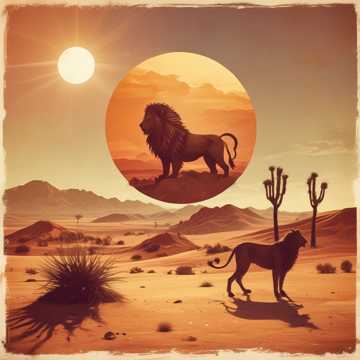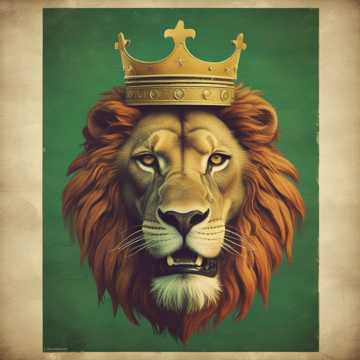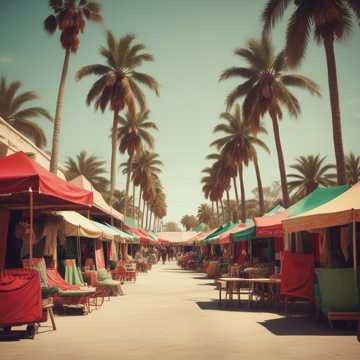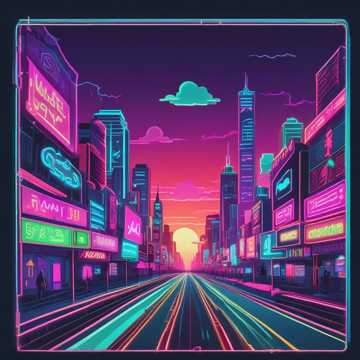
Free Moroccan culture Music Generator Powered by AI
Turn text into high-quality Moroccan culture music effortlessly – no login required!
music.toolTips

Coupe d'Afrique au Maroc
A vibrant anthem celebrating Morocco's journey in the African Cup of Nations, with powerful lyrics and energetic beats that highlight the country's football heroes and collective spirit.
02:37
1 days ago

Coupe du Trône
‘Coupe du Trône’ celebrates Morocco’s football triumphs with a blend of rap, energy, and national pride. The song highlights key players, the relentless drive for victory, and the electrifying atmosphere of the stadium.
03:25
1 days ago

Marrakesch Palmen
A dynamic vaporwave track capturing the essence of Marrakesh’s market streets, blending traditional Berber influences with modern high-energy beats. This song explores the sensory richness of Moroccan culture, from the bustling souks to the timeless architecture.
03:04
Invalid date

wdw
A vibrant celebration of Electra RP, blending roleplay, respect, and gaming culture with energetic vocals. From Casablanca to Agadir, this song explores the essence of teamwork, loyalty, and gaming integrity in Morocco’s top RP scene.
02:57
5 days ago
Introduction to Moroccan Culture Music
Moroccan culture music is an essential aspect of the country's rich cultural heritage, representing a fusion of diverse influences from Arab, Berber, African, and Mediterranean traditions. The music of Morocco is shaped by its history, geography, and the interplay of different ethnic groups over centuries. Originating as early as the 8th century, Moroccan music reflects the diverse regions of the country, from the coastal cities to the high Atlas Mountains. Over time, it has developed into a distinctive style, incorporating elements of both traditional and modern music, making it a significant cultural identifier for Morocco.
Sub-tags and Classifications of Moroccan Culture Music
Gnawa Music
Gnawa music is a powerful and hypnotic genre rooted in the spiritual and ritualistic practices of Morocco's former slave population. Combining African, Berber, and Arab influences, it is characterized by rhythmic drumming, chanting, and the use of traditional instruments like the 'gimbri' (a three-stringed bass instrument) and 'qraqeb' (metal castanets). Gnawa music is often performed during healing ceremonies, festivals, and spiritual gatherings.
Chaabi Music
Chaabi is one of the most popular forms of Moroccan folk music. It originated in the working-class neighborhoodsMoroccan culture music content of major cities like Casablanca and Marrakesh in the early 20th century. Known for its catchy rhythms and accessible lyrics, Chaabi blends Arabic melodies with Western influences, creating a vibrant and energetic style that appeals to a wide range of audiences.
Andalusian Music
Andalusian music, introduced by the Moors following their expulsion from Spain, remains a prestigious form of classical music in Morocco. This genre is characterized by its sophisticated structures and intricate melodies, played with instruments like the oud (lute), violin, and qanun (zither). Andalusian music is often performed in formal settings and is closely associated with the cultural elite.
Berber Music
Berber music, or Amazigh music, represents the indigenous people of North Africa and is deeply tied to their identity. It features powerful vocals and rhythmic percussion using instruments like the bendir (frame drum) and the flute. Berber music often reflects themes of nature, spirituality, and community life, and it remains an important part of Morocco's folk music scene.
Famous Artists and Works in Moroccan Culture Music
Oum Kalthoum
Though Egyptian by birth, Oum Kalthoum's impact on Moroccan music cannot be overstated. Her powerful voice and emotive delivery of Arabic classical music have influenced generations of Moroccan artists, particularly in the realm of traditional song and vocal technique.
Nass El Ghiwane - 'Lala Aicha'
This iconic song by Nass El Ghiwane is a perfect example of the fusion of traditional Moroccan music with revolutionary themes. The track blends Chaabi rhythms with poetic lyrics, calling for social change and addressing issues of poverty and justice. Its use of traditional instruments and powerful vocal harmonies make it a timeless classic in Moroccan music.
Hassan Hakmoun
Hassan Hakmoun is one of the most internationally recognized Gnawa musicians, known for his masterful performances on the gimbri. His work fuses traditional Gnawa rhythms with contemporary influences, bringing Moroccan culture to the global stage. His album 'Trance' is considered a landmark in the genre.
Hassan Hakmoun - 'Trance'
Hassan Hakmoun's album 'Trance' is a groundbreaking work in the fusion of Gnawa music with modern elements. By combining traditional Gnawa rhythms with jazz, blues, and rock influences, Hakmoun redefined the genre and brought it to international audiences. His use of the gimbri and qraqeb, alongside electric instruments, creates a mesmerizing and otherworldly sound that is both rooted in tradition and forward-thinking.
Nass El Ghiwane
This legendary Moroccan band has had a profound impact on the music scene in Morocco and beyond. Combining traditional Moroccan rhythms with revolutionary lyrics, Nass El Ghiwane became a symbol of social change, particularly during the 1970s. Their music blends Chaabi, Sufi, and North African folk influences.
Jil Jilala - 'Hadi Kif Daret'
This track by Jil Jilala captures the heart of Moroccan spirituality and social consciousness. Its rhythmic complexity and haunting melodies reflect the band’s deep connection to Sufi mysticism and Moroccan folk traditions. The use of vocals and instruments like the oud and darbuka creates a powerful sound that evokes both contemplation and celebration.
Jil Jilala
A prominent band in the 1970s, Jil Jilala contributed to the popularization of Moroccan music on the world stage. Known for their spiritual lyrics and innovative sound, they blend traditional Moroccan rhythms with influences from other parts of the Arab world, giving rise to a unique fusion that continues to inspire new generations.
Application Scenarios of Moroccan Culture Music
Moroccan culture music is often used in movie soundtracks to evoke the atmosphere and traditions of North Africa. For example, the use of Gnawa rhythms or Andalusian melodies can transport viewers to Morocco's vibrant streets or its serene desert landscapes. Films like 'The Sheltering Sky' and 'Hidalgo' feature Moroccan music to underscore the cultural richness of the setting.
Movie Soundtracks
In advertising, Moroccan music is used to convey authenticity, exoticism, and cultural depth. Brands looking to highlight their connection to North African heritage often incorporate Moroccan musical elements, such as the rhythmic percussion of Berber music or the trance-like beats of Gnawa music, to create an immersive experience for viewers.
Advertising Music
Moroccan culture music is increasingly featured in video game soundtracks, particularly in games set in North Africa or Middle Eastern-inspired worlds. The hypnotic beats of Gnawa or the dramatic sounds of Andalusian music provide a rich auditory backdrop that enhances the immersive qualities of the game, adding depth to the world-building process.
Video Game Background Music
Live performances and festivals, such as the Mawazine Festival in Rabat, showcase the diverse sounds of Moroccan culture. These events often feature traditional music alongside contemporary styles, reflecting the evolution of Moroccan culture. The festival attracts international artists and audiences, promoting Moroccan music on the global stage.
Live Performances and Festivals